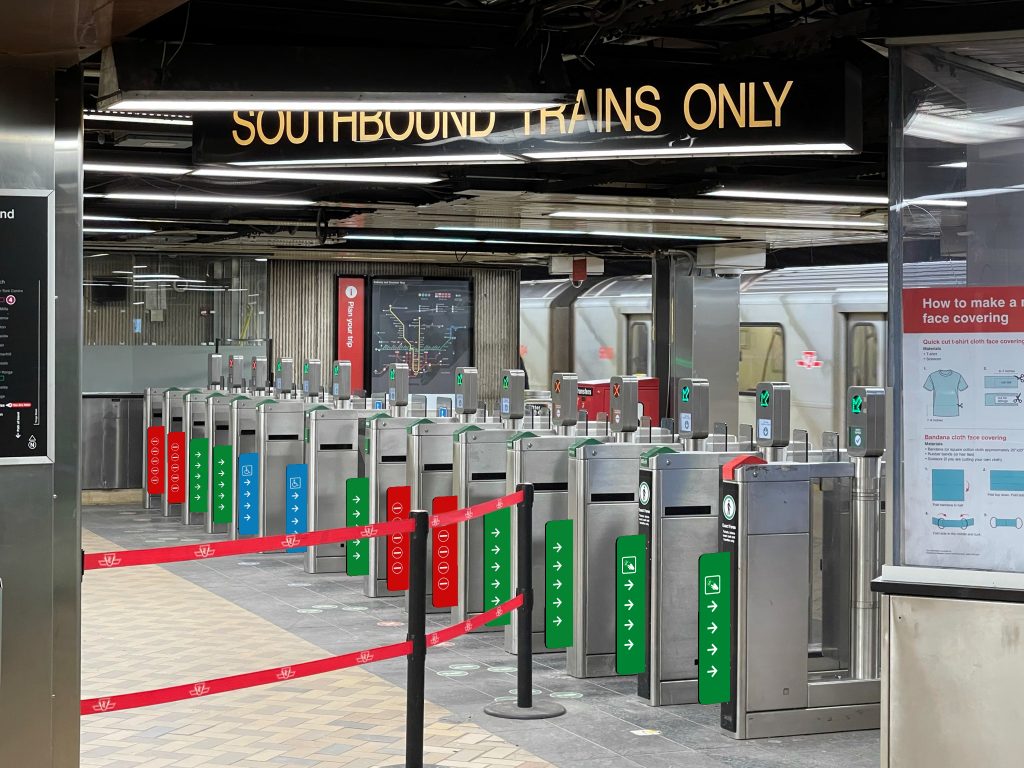After 15 years and 40 conferences, forums, webinars and debates, Transport Futures continues to raise the bar to ensure transportation decision-makers have the best and latest scholarship on mobility solutions.
But as Transport Futures founder Martin Collier suggested recently in introducing the sixth and final speaker in his latest series, Mobility Pricing Conversations, transit decisions tend to be as much about politics as policy.
The conversations series involved presentations from the past 15 years, with Collier asking speakers to review their work in a COVID-altered world. The final speaker, discussing Transit Fare Policy Challenges and Strategies was consultant Brendon Hemily of the Toronto-based firm Hemily & Associates.
“Road pricing, where’s it going?” asked Collier. “I think we’ve raised a lot of awareness, but it’s still an elephant in the road and we’ve taken tolls off the 412 and 418 highways, with gas taxes being cut, with the licence-plate renewal sticker fees being abolished, I think there’s been about $3 billion lost just right there.”
Hemily said the eternal question is whether transit is a business or a social service. Should fares be based on questions of equity, with the state serving citizens who are in need, or should fares be based on economic arguments, with the price set to reflect costs and marginal utility to the user.
Post-pandemic, Hemily said, there are several examples of the equity argument winning out.
“There’s always been a tension between simplicity and comprehension by users, versus economic, well-founded tenets of how you should look at fare policy,” he observed. “And there’s been a growing movement to have the pendulum towards simplification and flat fares and simplified zones.
“There’s a real business need for revenues. So they’re conflicting objectives.”
During the pandemic, Hemily noted, awareness of the social benefits of public transit was heightened, when it was imperative for essential workers to get to work. The social divide between low-income workers who had to take public transit and the wealthy who could drive their own vehicles become more obvious.
How should social fares, targeting people on low incomes, be paid?
“What would be really useful is if those reductions, those discounts, would be paid for by the social services as opposed to paid for by transit,” said Hemily.
The emphasis on equity has led to a discussion of free fares, but the experience around the world so far is inconclusive. The City of Burlington, Ont. recently issued an RFP to consult to evaluate free fares for all riders, while Tallinn, in Estonia, Luxembourg, Kansas City, Los Angeles, Houston and Washington, D.C. have embarked on various ventures.
One study of the Tallinn experience showed free fares increased ridership by only 1.3 per cent.
“What it did have an impact on? It lowered pedestrian activity, because now that the fare of the buses were free, people, rather than walk the two blocks, the bus was coming along and they jump on board,” Hemily said.
Right now, all eyes are on New York City because transit administrators are putting in place a congestion charge on the bridges below 60th Street, Hemily said. The idea is to ease congestion in the downtown area and also to generate funding for capital purposes. In addition, there has been a payroll tax increase to provide funding for operations.
“So they’re looking with anticipation to the next years being very good,” said Hemily.
The third speaker in the latest series was Harry Kitchen, professor emeritus in the economics department at Trent University, addressing Ontario’s gas tax. Ontario’s populist Ford government reduced gas taxes in 2018 and 2022 but in February 2023 the government announced it was allotting $380 million to help 107 municipalities operate and improve local transit.
The obvious problem with the gas tax in the province, Kitchen said, is that in the relatively short term, as more EVs are introduced, the revenue from gas taxes will drop. But where will the next round of funding come from to pay for transit and new roads?
“You’re not going to do it through an electricity charge, I suspect, so you’re going to have to introduce some road pricing,” said Kitchen.
Public transit in Canada has always been handcuffed by its administrative structure in comparison to the U.S. In the U.S., transit is often run through regional agencies that can find income from different sources, not just the farebox, and there are also many regions that have earmarked, dedicated taxes.
“In Canada there’s a reluctance from all ministries of finance to ever allow for dedicating earmark taxes and the like,” Hemily said, with TransLink in Vancouver and Montreal being exceptions.
In contrast, municipal transit in Canada is mainly run by the municipality.
“They only have access to very limited sources of taxation, basically property tax and very limited user fees. So they’re much more constrained about what they can do.”



Recent Comments
comments for this post are closed